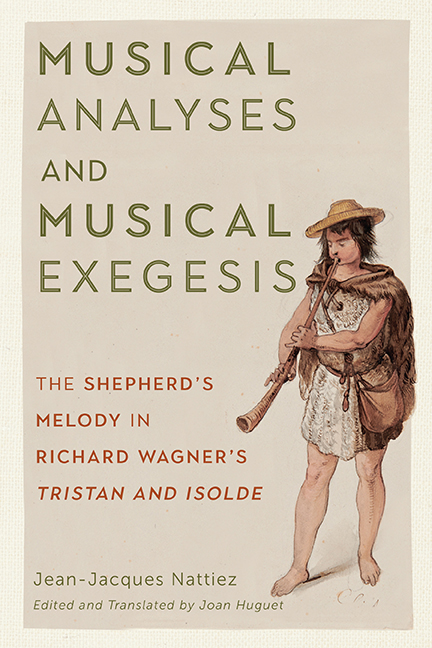 Musical Analyses and Musical Exegesis
Musical Analyses and Musical Exegesis Published online by Cambridge University Press: 02 June 2021
The Semiological Challenges of Performance
My esthesic analysis of the solo will begin by discussing musical performances of it. This might surprise my reader, due to the obvious fact that a musical performance can be viewed as part of a work's creative process, giving rise to its reality in sound. However, as I discussed in the introduction, in western culture the performer is the first person who perceives the musical work, which the composer established through the score's written notation. It is performers’ choices that determine audiences’ reactions; however, these choices arise as the result of their analyses of the pieces they play, which may be more or less systematic, more or less coherent, and more or less intuitive. Most significantly, a performer's analysis of a work determines his or her phrasings. This is how a performer puts his or her stamp, semiologically speaking, on a work.
The performer's stamp, however, is not necessarily the result of conscious intentions. Performers reconstruct musical works starting from their own poietic pathways as determined by their aesthetic sensibilities, talents, and technical capacities, as well as by the specific performance and recording contexts in which they work. Through this process, performers create the particular symbolic form of the sounding work, which bears its own unique attributes. In their turn, listeners will then reconstruct both the work and its performance through their own esthesic pathways.
Performers reorganize a musical work based upon their own understanding of it, which may be more or less systematic in nature. When listening to a given performance, it is often clearly apparent whether the performers called upon analysis, as Maurizio Pollini and Alfred Brendel do, or whether they primarily relied upon their own intuitions, as is the case for Martha Argerich and Ivo Pogorelich. Whatever their inclinations might be, the performer's stamp brings a specific and often unique perspective to the work. A musical performance thus serves as an initial esthesic analysis of the work handed down by the composer. Furthermore, a comparison of different performances constitutes a meta-analysis of a work, just like a comparison of musicological analyses.
In my opinion, there is no doubt that music analysis is a fully autonomous and legitimate musicological objective, requiring no justification other than the pursuit of knowledge.
To save this book to your Kindle, first ensure [email protected] is added to your Approved Personal Document E-mail List under your Personal Document Settings on the Manage Your Content and Devices page of your Amazon account. Then enter the ‘name’ part of your Kindle email address below. Find out more about saving to your Kindle.
Note you can select to save to either the @free.kindle.com or @kindle.com variations. ‘@free.kindle.com’ emails are free but can only be saved to your device when it is connected to wi-fi. ‘@kindle.com’ emails can be delivered even when you are not connected to wi-fi, but note that service fees apply.
Find out more about the Kindle Personal Document Service.
To save content items to your account, please confirm that you agree to abide by our usage policies. If this is the first time you use this feature, you will be asked to authorise Cambridge Core to connect with your account. Find out more about saving content to Dropbox.
To save content items to your account, please confirm that you agree to abide by our usage policies. If this is the first time you use this feature, you will be asked to authorise Cambridge Core to connect with your account. Find out more about saving content to Google Drive.